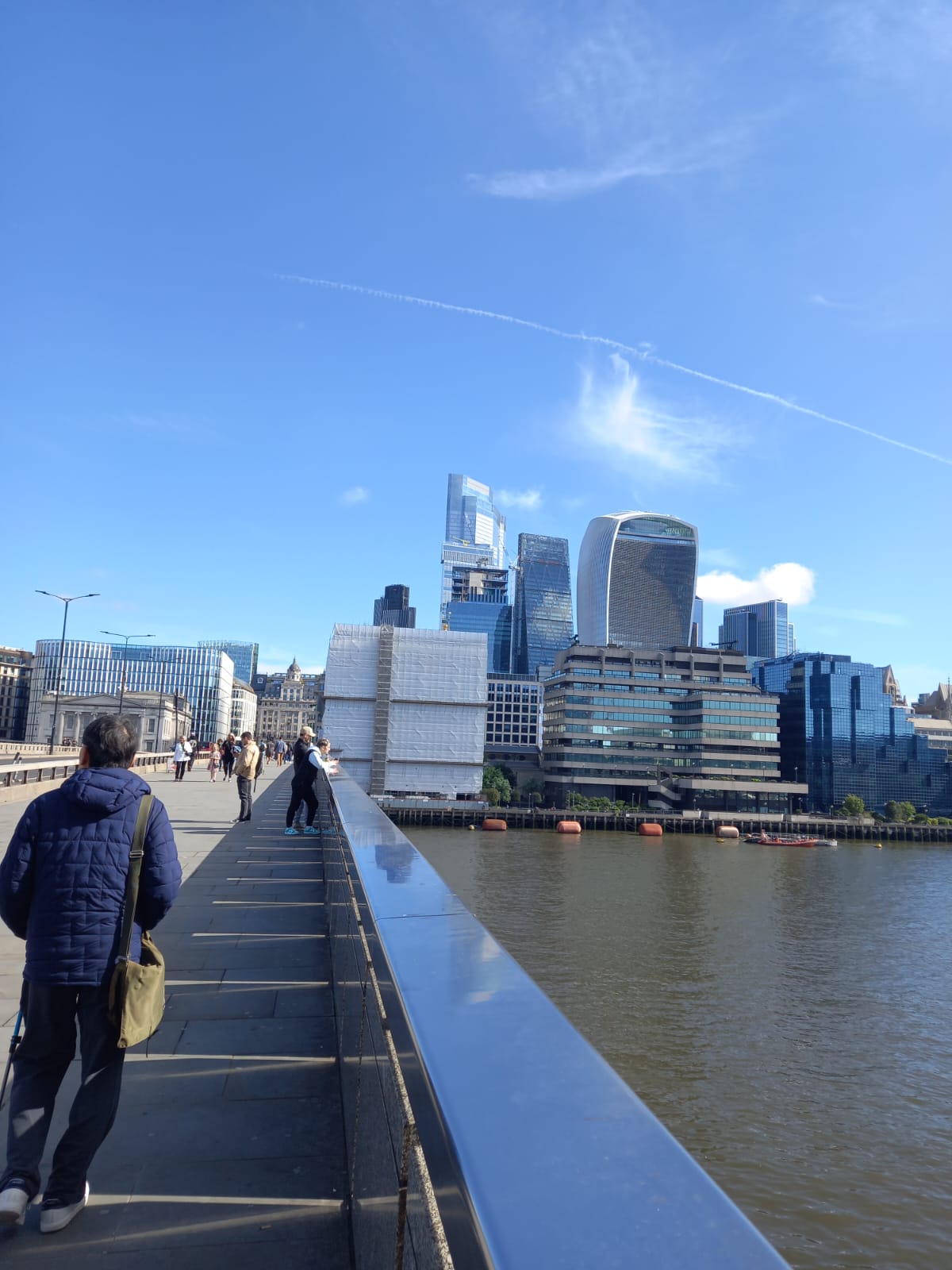The City of London is not just the business and financial centre of London. It’s also the original area of London itself! Londinium is the first Roman settlement on site of the City we know today. The City of London is a very interesting quarter. The architecture mixes between the present and the past. You can see old medieval traditional and 19th Century building standing in the middle of modern skyscrapers. Skyscrapers like the Gherkin, Fenchurch Building (Sky Garden), and much more!
The City of London is the second ranking of financial centres in the world. Visiting it is absolutely amazing as you can see the past and the future. Walking trough narrow pedestrian streets can hurt your neck when you try to contemplate the top of the buildings. The City has a wonderful view to offer from outside when coming from London Bridge. As you walk to the end of the London bridge you pass by the Monument to the great fire of London. But he first interesting skyscraper is the Fenchurch Building whose nickname is the Talkie-Walkie.


The Fenchurch Building
The building resembles to a Talkie-Walkie due to its shape. This iconic London’s skyline skyscraper is on site of a former 1968 building. The construction of the Talkie-Walkie spans between 2009 and 2014. It’s a 38 storey building which houses offices. However the main attraction is the Sky Garden. The Sky Garden boast itself to be the highest public garden in London. So you can find a tropical indoor garden, restaurant and bar. Access to this rooftop is free by booking through their website above. So by the way access is subject to availability. The architect and designer is Rafael Vinoly.

The Royal Exchange
The Royal exchange is a centre of commerce in the City of London. Located on Bank junction the Royal exchange. You can see the statue of the Duke of Wellington and the London troops war memorial in the background. As you reach the square you can easily spot the West façade of the exchange. The style design of the current building is neoclassical. Back in the 16th Century the centre is founded by Sir Thomas Gresham. The original building is inaugurated by Queen Elizabeth I. However fire subsequently destroys the building through the time, especially by the 1666 great fire of London. The building is rebuilt several times following the disasters and the one standing today is designed in the 1840’s. Today it contains luxury shops and restaurants. Also the steps are the place of Royal proclamations such as parliament dissolutions or accession of a new Monarch.
Bank of England
The Bank of England building stands since 1694. Stockholders own the Bank from its foundation until its nationalization in 1946. The foundation of the Bank of England is a result of the defeat of the 1690 battle of beachy head during the 9 years war with France. King William III decides to build a naval fleet to rival with France. The country is debt and in these circumstances King William III needs to rebuild the naval fleet. Two City merchants decide to create a central Bank for the economy’s recovery and rebuilding a naval fleet. In consequence England becomes a naval superpower during the 18th century. The Bank of England we know today controls Gold reserve, issues banknotes and also setting interest rates.

Mansion House
The City of London is a local government district and is also a ceremonial County. So the City has its own Lord Mayor who is the leader of the City and Sadiq Khan is the Mayor of the Greater London. A poll takes place every year to elect the Lord Mayor of the City. The Lord Mayor represents and promotes the UK-financial and professional services industry worldwide. So Mansion House is his official residence since the 18th Century. The building is of Palladian style.

The Gherkin
Here is the most iconic skyscraper of the City. The Gherkin opens in 2004 as the construction spans from 2001 to 2003. Also known as the 30 St Mary Axe, the Gherkin stands on the site of the former Baltic exchange. However an IRA bombing severely damage the Baltic in 1992. In 1995 archaeologists discover the remains of a young Roman girl. They found that she died 1600 years ago towards the end of Roman era in Britain. So in 2007 the reburial takes place on site of discovery with a commemorative plaque laid. The constructor of the building is the Swedish company Skanska. The architectural style is neo-futurism and post-modernism.

Leadenhall Market
You may have spotted Leadenhall Market in Harry Potter and the Philosopher’s stone. This covered market basically is a part of the Diagon alley scenery. Or representing the area near the leaky cauldron. But also features in movies like Hereafter (2010), Brannigan (1975) or Hidden City (1987). The Market dates back from the 14th Century. At this time this is a great spot for selling poultry or butchering. But the market we have today dates back from 1881. In 1991 the market undergoes restoration to its former glory. Today we can see mostly bars, restaurants, clothes shops.

More informations
The City of London is accessible by TFL Underground station by Liverpool street, Bank, London Bridge and Aldgate East. Closed to St Paul Cathedral and the Museum of London and the Tower of London. The City’s of London is very hustling and bustling especially during rush hours when worker go and leave their office. I recommend a visit in the middle of the day. You have also a stunning view of the Shard and Tower Bridge. You can walk along narrow pedestrian streets where you can find restaurants and bars and shops and other amazing pieces of history



